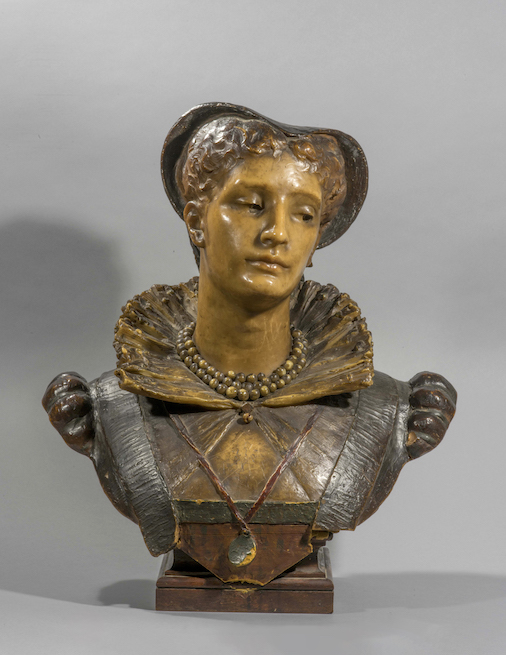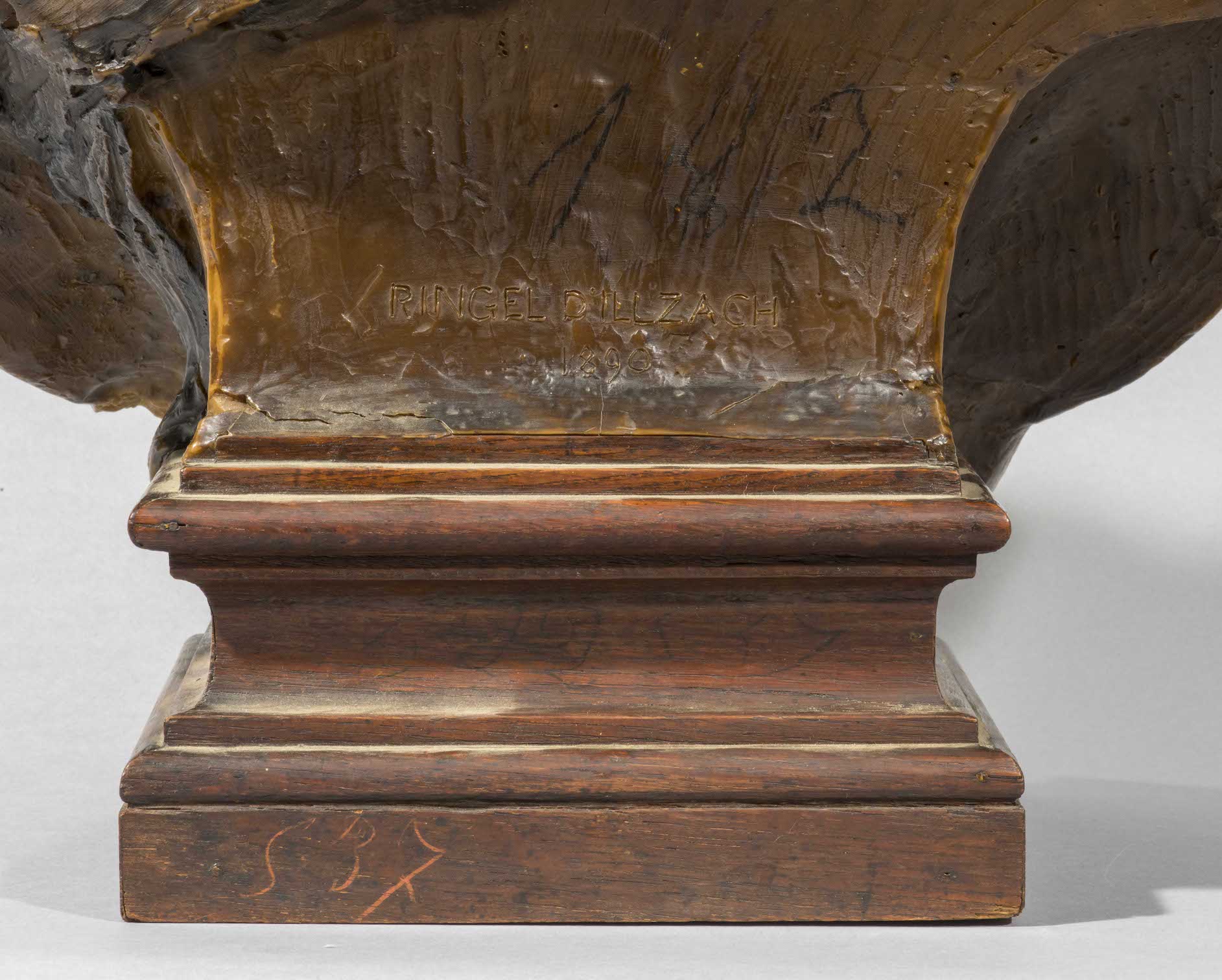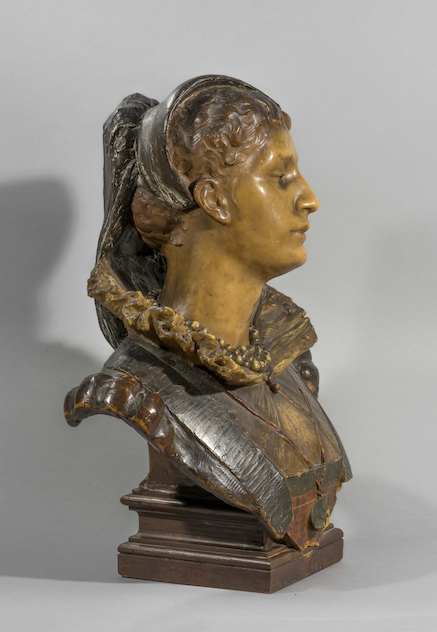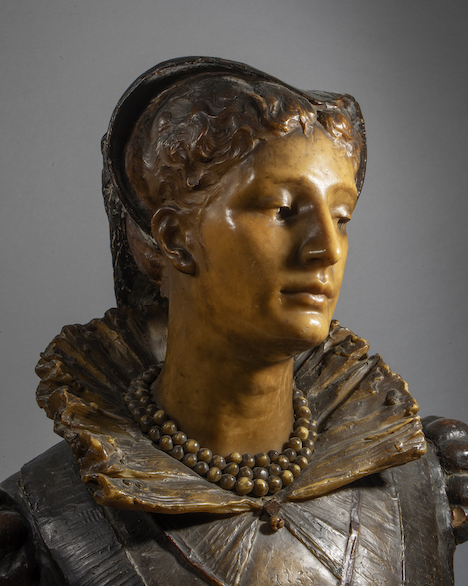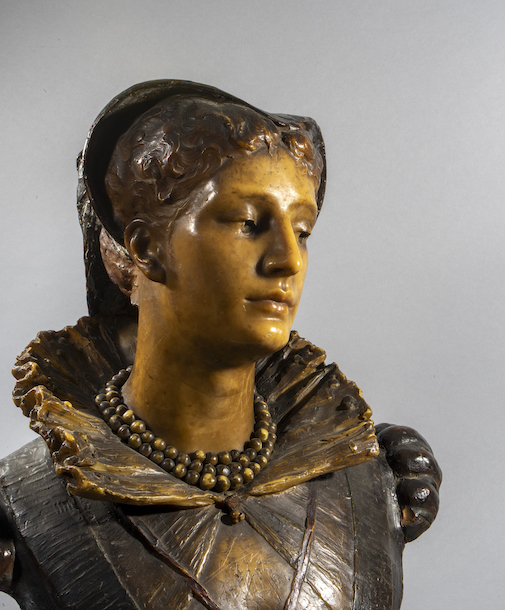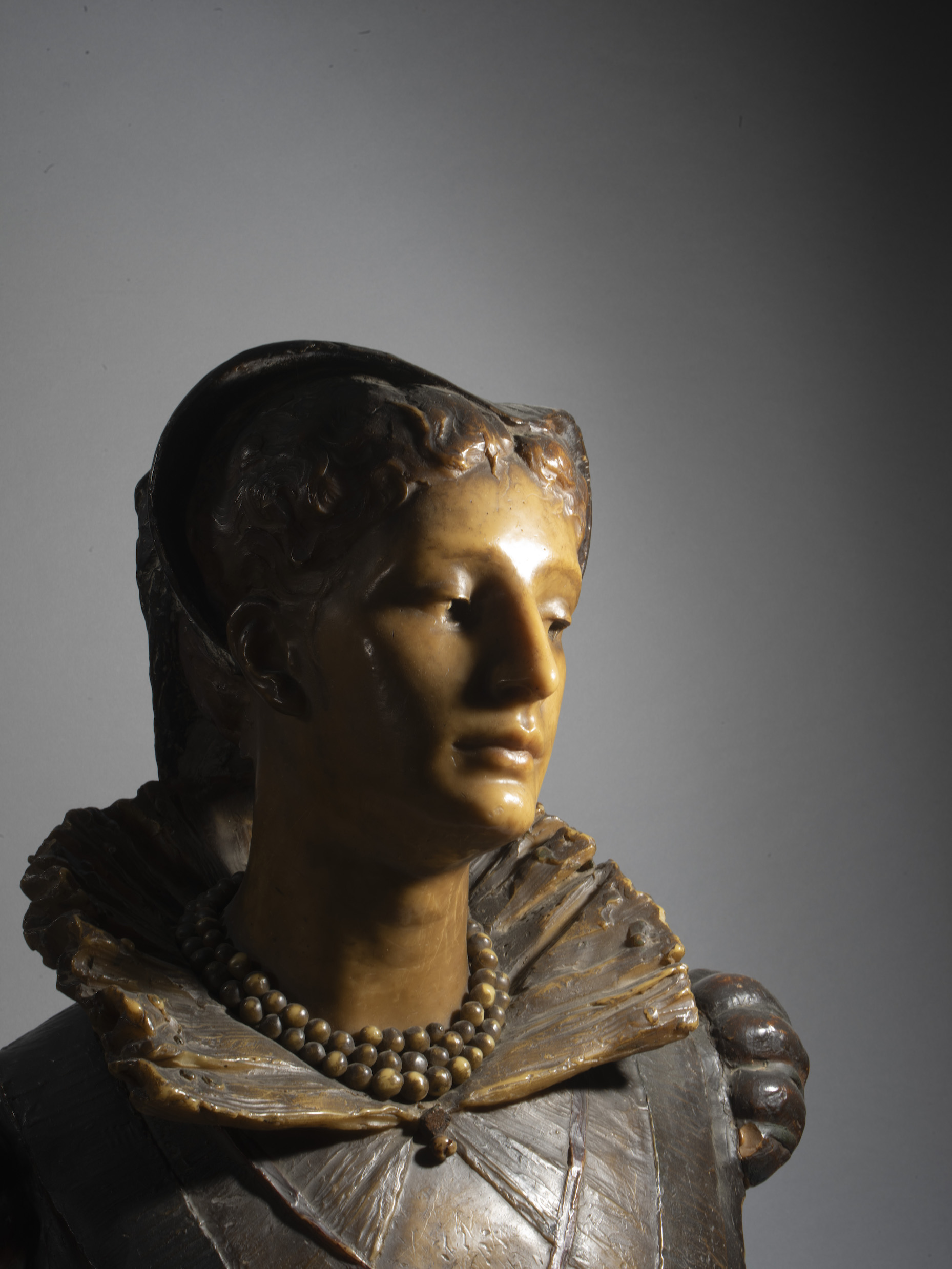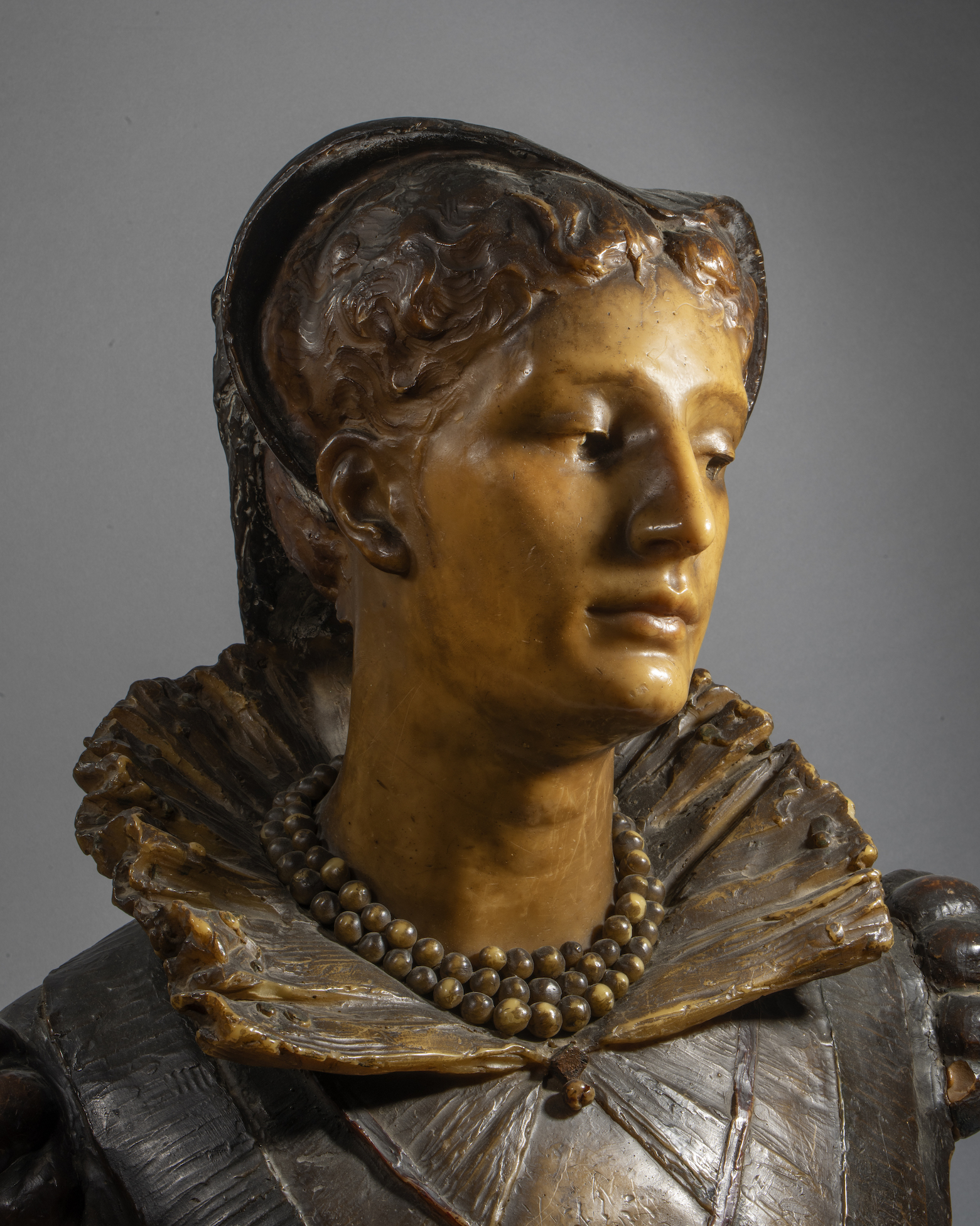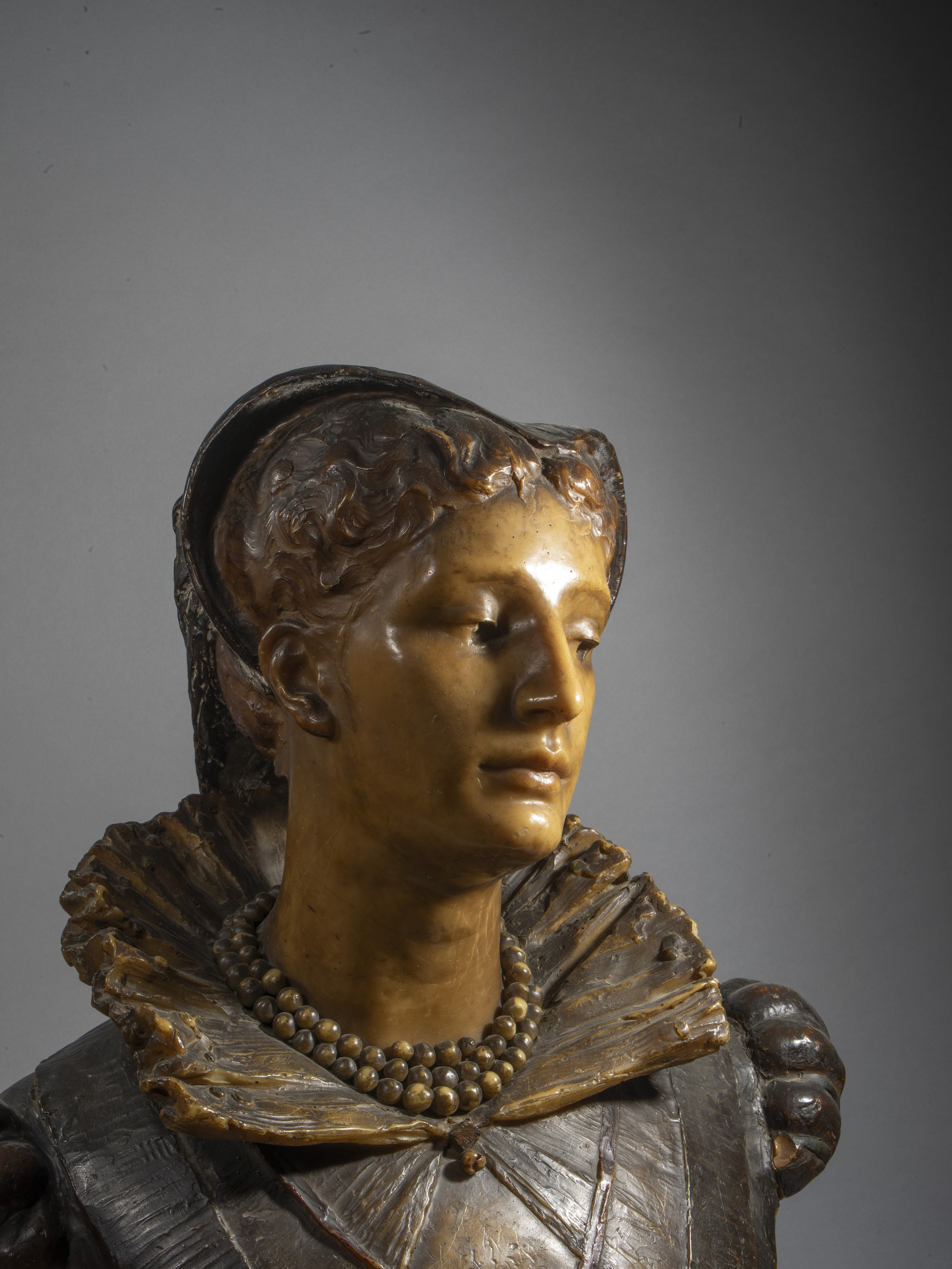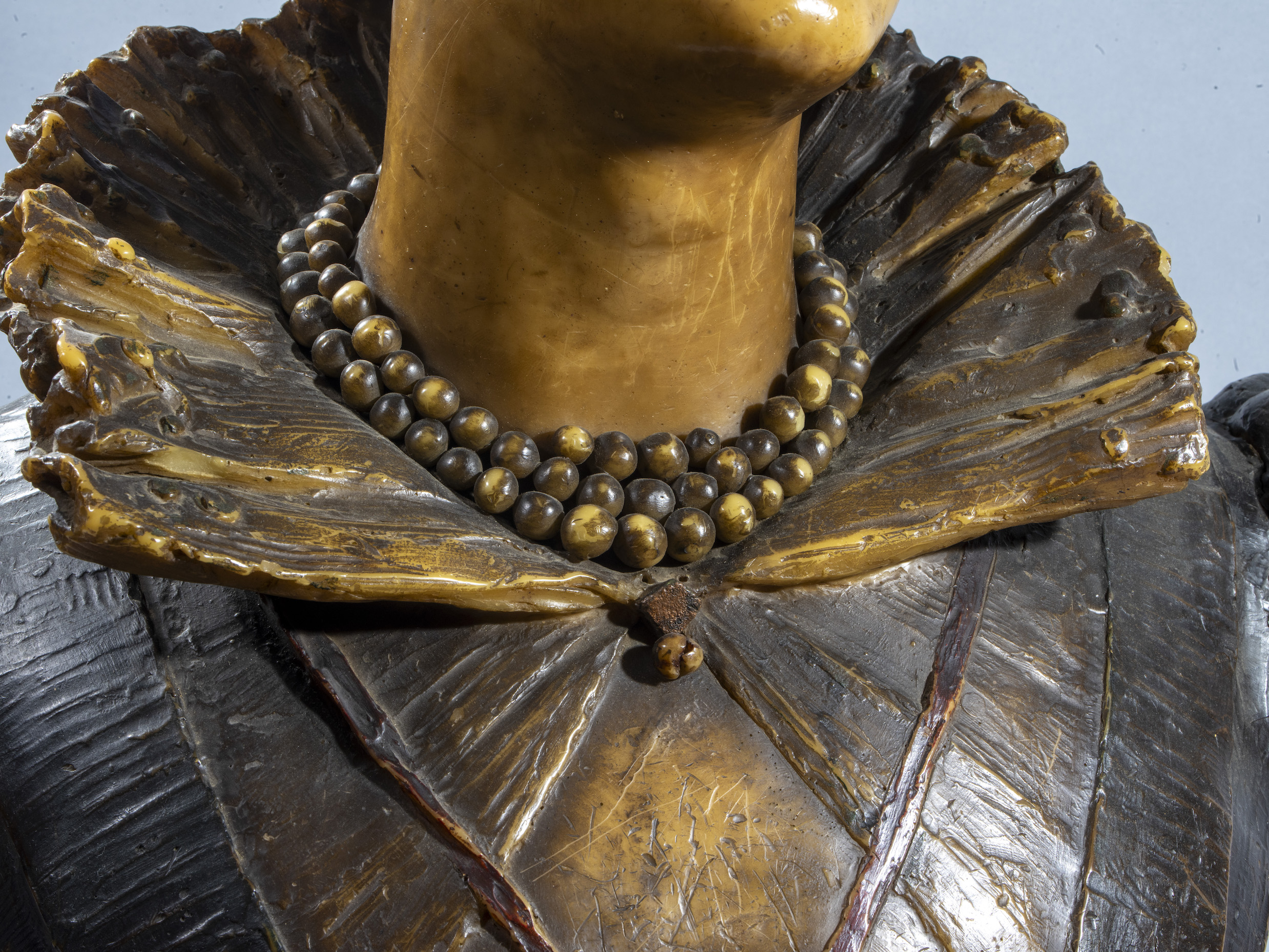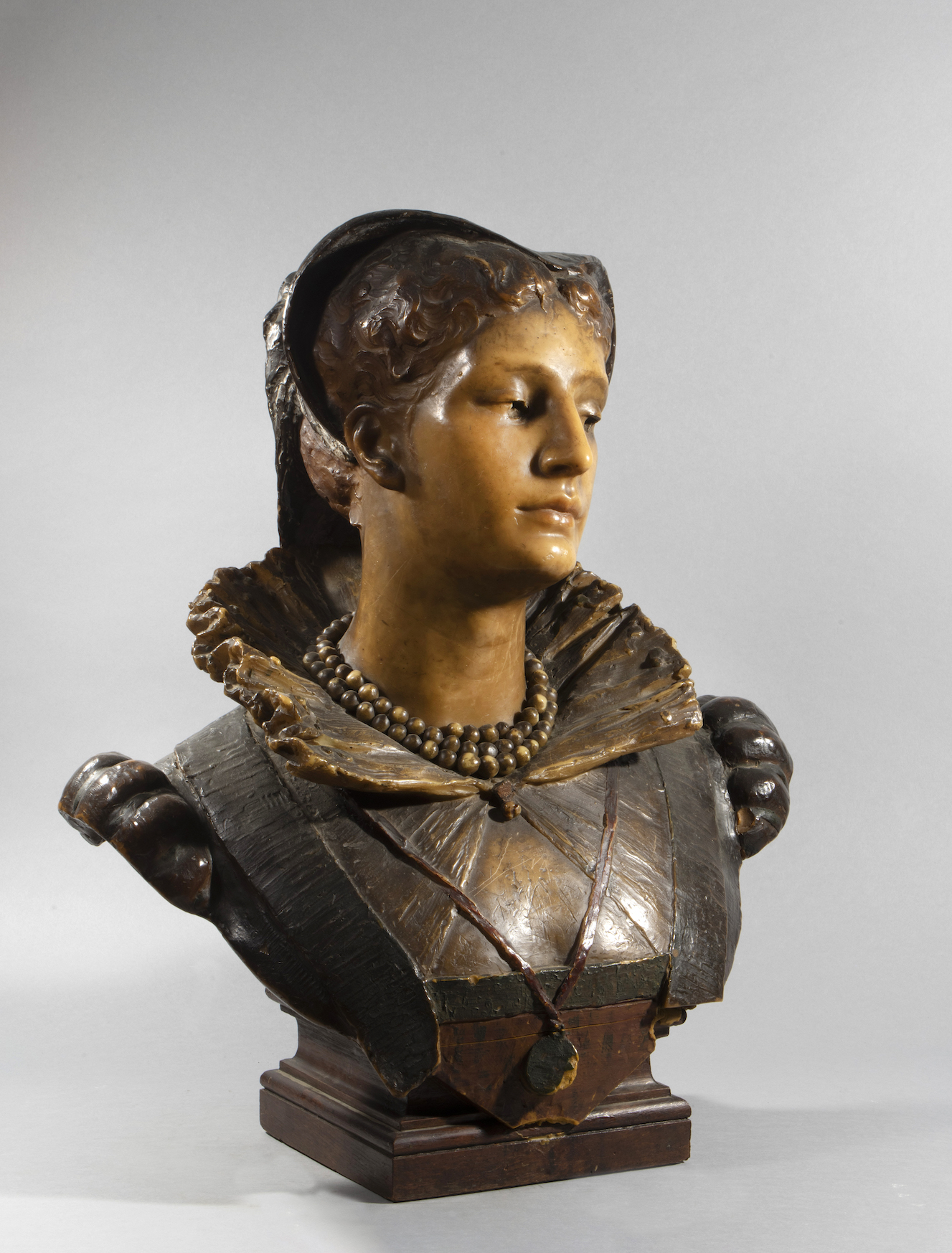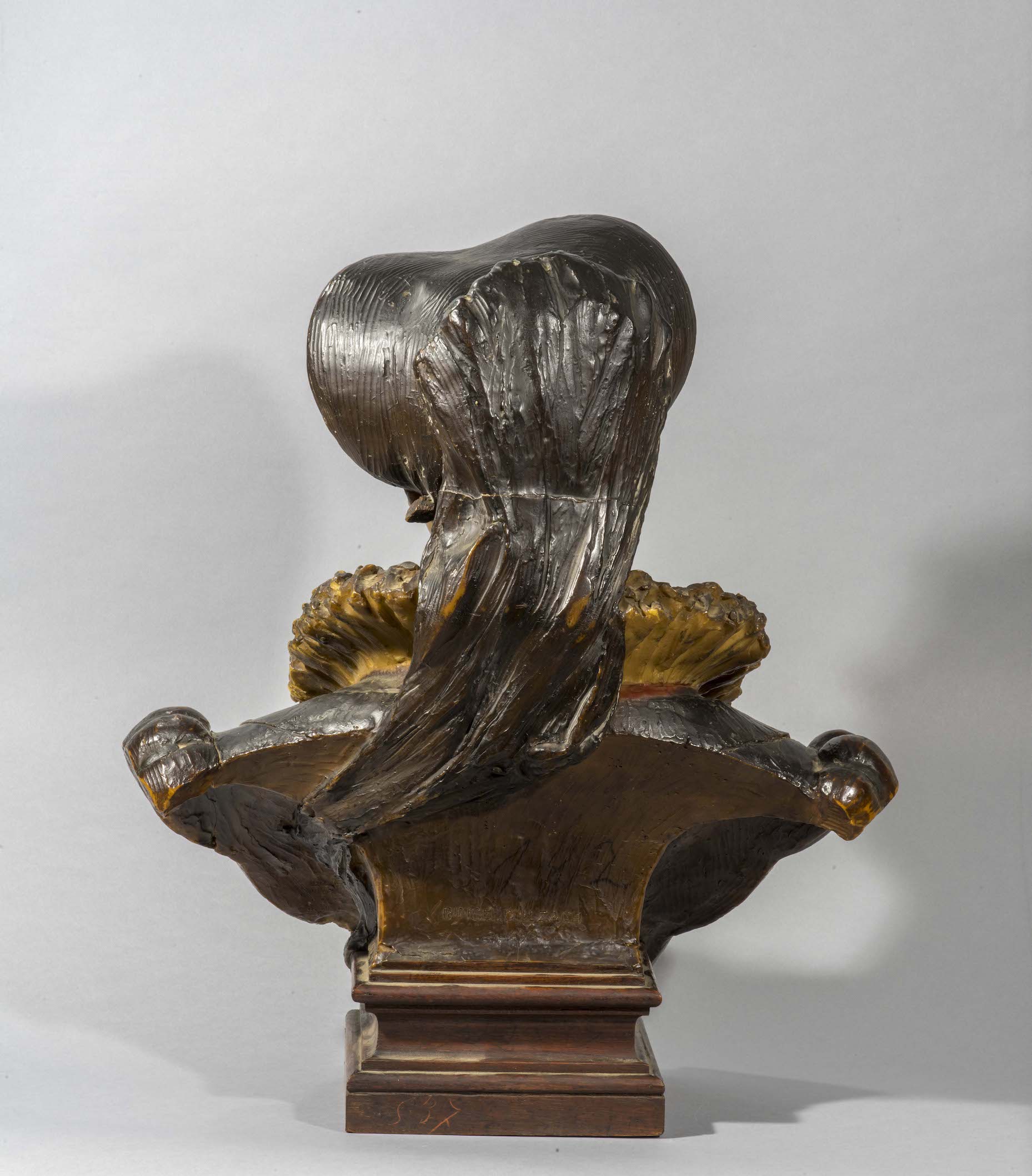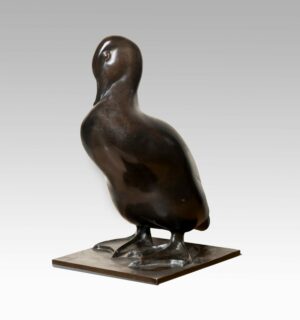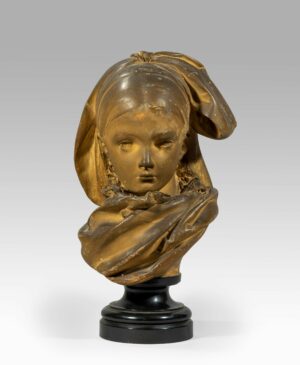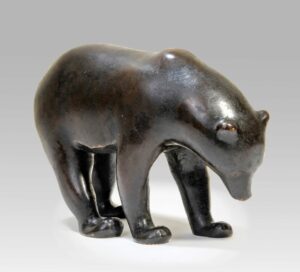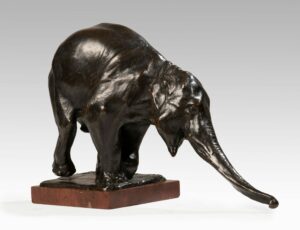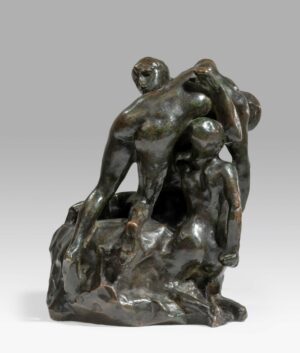Description
In a context animated by aesthetic debates about polychromy in modern sculpture, particularly artificial polychromy, Jean Désiré Ringel d’Illzach played a major role in restoring the use of polychrome wax in this field in the last quarter of the 19th century.
Unlike monochrome waxes, polychrome waxes are designed to be preserved as they are, without offering any guarantee of durability. Ringel d’Illzach found a way to harden and color wax in such a way as to render it “unalterable”, as stated in the catalog of the sale of his works organized at the Hôtel Drouot on March 21, 1904. He invented a mixture of wax and resin, harder than modeling wax, which melts at 80°C. The advantage of this material is that it can be cast in molds, is easily reworked when hot, and can accommodate certain additions after casting (such as jewelrygems). It also allows precise coloring of distinct parts, so far as to create a disturbing illusion in the rendering of flesh and skin, a fact not lost on its detractors at the time.
Ringel d’Illzach contributed not only to the renewal of polychrome wax sculpture in the Salons, but also to the emergence of waxworks displays, such as the Musée Grévin, of which he was a partner when it was founded in 1882.
The story of our bust of Mary Stuart perfectly illustrates these two fields of creative activity.
A full-length statue of Mary Stuart was commissioned by the Duchess of Pomar. Discovering that the Queen of Scotland and England exactly resembled her, she asked Ringel d’Illzach to give Marie Stuart her face. A plaster sculpture was produced and exhibited at the Salon de la Société Nationale des Beaux-Arts, held at the Champ de Mars on May 15, 1891.
Dated 1890, could our life-size wax bust have been a preparatory work for this sculpture? There are similarities in the choice of Renaissance costume and accessories (upper sleeves, headdress, veil, pearl necklace), in the slightly turned and tilted posture of the head, and in the facial features, with the exception of the eyes. In our bust, the eye sockets are recessed and painted, giving the eyes an intensity characteristic of Ringel d’Illzach’s waxworks, just as the hair is reworked with a comb to accentuate the movement of the wavy, supple locks.
Whether it is a preparatory work or not, our wax has a beautiful, homogeneous texture, with no air bubbles, which attests to its high quality. It stands on an original wooden base.
The work eventually entered the collections of Doctor and Madame Galippe, whom Ringel d’Illzach knew well since he produced a medallion of the doctor and a bust of his wife in wax. The couple therefore acquired the bust of Marie Stuart directly from the artist. Then, in 1925, after her husband’s death, Madame Galippe decided to donate it, along with her own bust and two others, to the Musée des Beaux-arts in Mulhouse, whose collections belonged to the Société Industrielle de Mulhouse. The inventory of the museum’s collections, however, drawn up in 1958 when it was transferred to the municipality, makes no mention of the bust of Marie Stuart.
This unique and exceptional piece has come down to us in a remarkable state of preservation. The process developed by Ringel d’Illzach has proved its worth…

